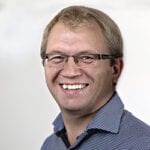Today’s and tomorrow's feed ingredients in Norwegian aquaculture
Publikasjonsdetaljer
Utgiver : Nofima AS
Internasjonale standardnummer
:
Trykt
:
978-82-7251-944-4
Publikasjonstype : Nofimas rapportserie
Serier : Nofima rapportserie 52/2011
År : 2011
Lenker
:
ARKIV
:
http://hdl.handle.net/11250/25...
Har du spørsmål om noe vedrørende publikasjonen, kan du kontakte Nofimas bibliotekleder.
Kjetil Aune
Bibliotekleder
kjetil.aune@nofima.no
Sammendrag
During the last decade, the production of Atlantic salmon has increased from around 900,000 tons worldwide in 2000 to more than 1,500,000 tons today, an increase of almost 70%. Norway is the main producer of Atlantic salmon. However, the growth in the salmon industry has raised concerns about the environmental impacts of fish farming. The consumer demands documentation of a safe and environmentally sustainable production of salmon. Feed is a major input factor in salmon production and sustainability of the salmon production is very often a discussion about use of feed ingredients. Traditionally, fish meal and fish oil were the most important ingredients in salmon feeds. Growth in the salmon production is made possible by an extensive use of alternative feed ingredients. The purpose of this report is to evaluate strength, weakness, opportunities and threats of the most important ingredient resources used in salmon feed today and those that may be used in the future. Alternative plant ingredients, microbial ingredients, animal by-products and marine resources are discussed. It is expected that plant ingredients will be even more important in future diets and that use of microbial ingredients will increase. Therefore, it is important with extensive research on production technologies for alternative ingredients, and for technology to upgrade plant and microbial ingredients to increase the use in future diets. There is an urgent need to explore alternative sources of EPA and DHA resources to meet the need for theses limited nutrients in salmonid diets.




